B Cells and T Follicular Helper Cells Mediate Response to Checkpoint Inhibitors in High Mutation Burden Mouse Models of Breast Cancer
- PMID: 31730857
- PMCID: PMC6911685
- DOI: 10.1016/j.cell.2019.10.028
B Cells and T Follicular Helper Cells Mediate Response to Checkpoint Inhibitors in High Mutation Burden Mouse Models of Breast Cancer
Abstract
This study identifies mechanisms mediating responses to immune checkpoint inhibitors using mouse models of triple-negative breast cancer. By creating new mammary tumor models, we find that tumor mutation burden and specific immune cells are associated with response. Further, we developed a rich resource of single-cell RNA-seq and bulk mRNA-seq data of immunotherapy-treated and non-treated tumors from sensitive and resistant murine models. Using this, we uncover that immune checkpoint therapy induces T follicular helper cell activation of B cells to facilitate the anti-tumor response in these models. We also show that B cell activation of T cells and the generation of antibody are key to immunotherapy response and propose a new biomarker for immune checkpoint therapy. In total, this work presents resources of new preclinical models of breast cancer with large mRNA-seq and single-cell RNA-seq datasets annotated for sensitivity to therapy and uncovers new components of response to immune checkpoint inhibitors.
Keywords: B cells; CTLA4; PD1; T cells; TMB; breast cancer; genomics; immune checkpoints; immunotherapy; mouse models; tumor mutation burden.
Copyright © 2019 Elsevier Inc. All rights reserved.
Conflict of interest statement
Disclosure of Potential Conflicts of Interest
C.M.P is an equity stock holder and Board of Director Member of BioClassifier, LLC and GeneCentric Therapeutics. C.M.P and J.P. are also listed as an inventor on patent applications on the Breast PAM50. C.M.P, B.G.V., and J.P. are equity stock holders in GeneCentric Therapeutics.
Figures


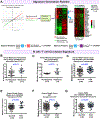
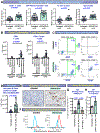
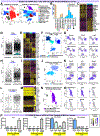
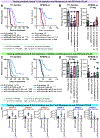
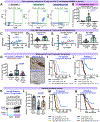
References
-
- Bindea G, Mlecnik B, Tosolini M, Kirilovsky A, Waldner M, Obenauf AC, Angell H, Fredriksen T, Lafontaine L, and Berger A (2013). Spatiotemporal dynamics of intratumoral immune cells reveal the immune landscape in human cancer. Immunity 39, 782–795. - PubMed
-
- Bolotin DA, Poslavsky S, Mitrophanov I, Shugay M, Mamedov IZ, Putintseva EV, and Chudakov DM (2015). MiXCR: software for comprehensive adaptive immunity profiling. Nature methods 12, 380–381. - PubMed
-
- Budczies J, Seidel A, Christopoulos P, Endris V, Kloor M, Gyorffy B, Seliger B, Schirmacher P, Stenzinger A, and Denkert C (2018). Integrated analysis of the immunological and genetic status in and across cancer types: impact of mutational signatures beyond tumor mutational burden. OncoImmunology, 1–13. - PMC - PubMed
Publication types
MeSH terms
Substances
Grants and funding
LinkOut - more resources
Full Text Sources
Other Literature Sources
Molecular Biology Databases

